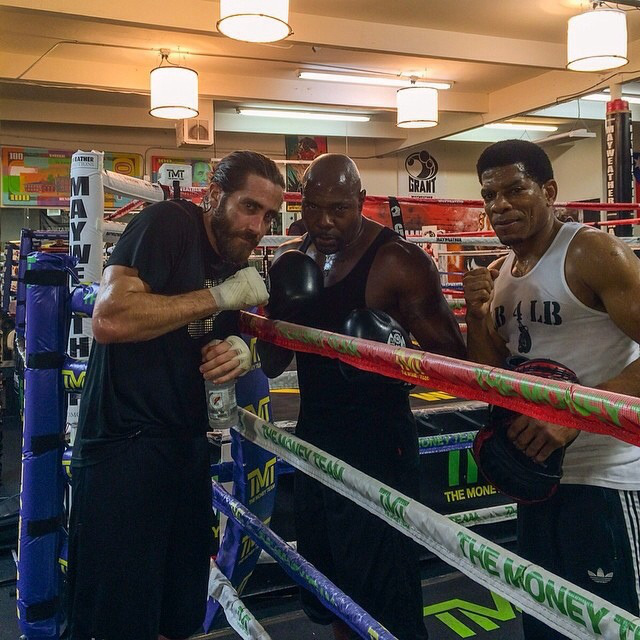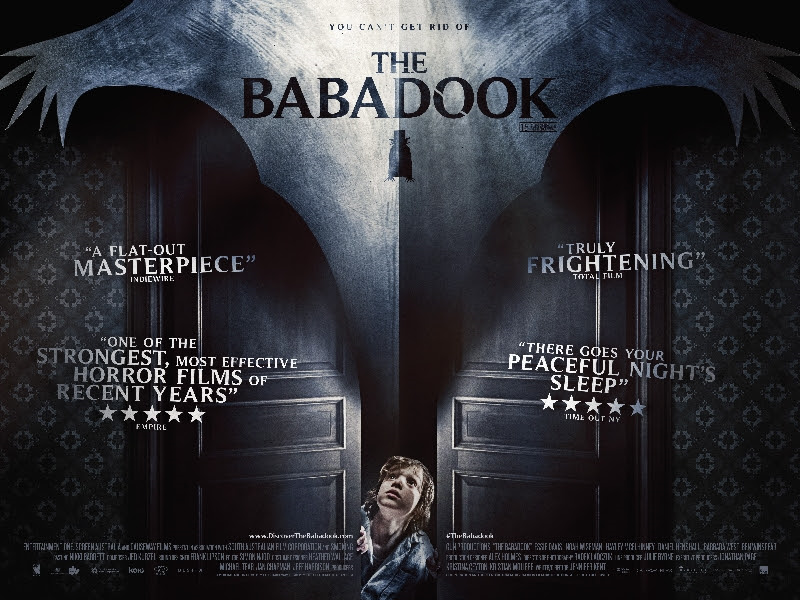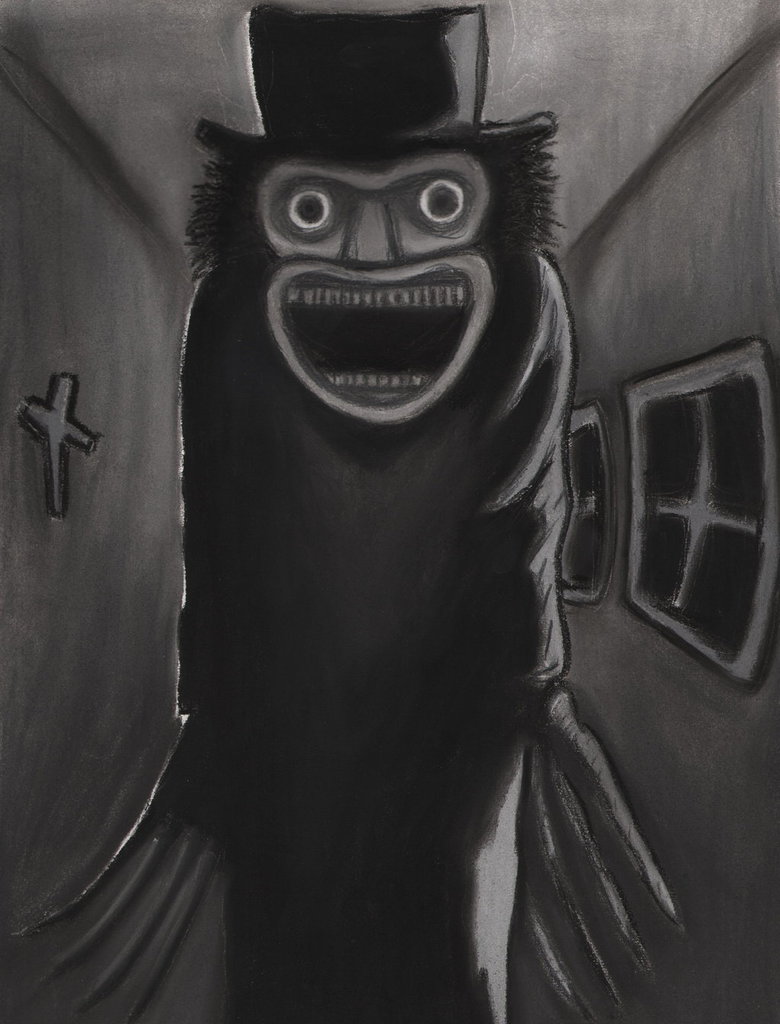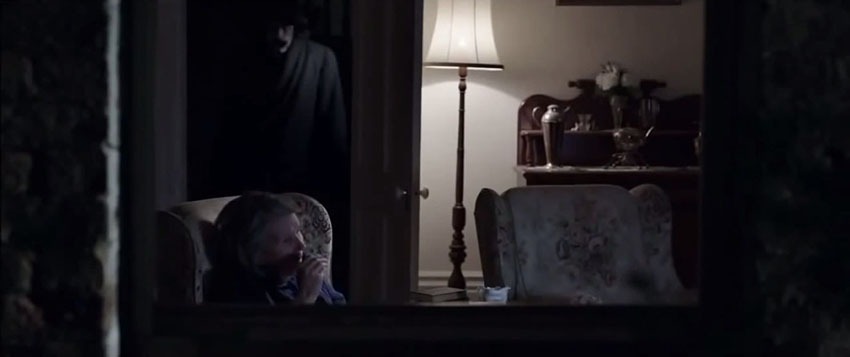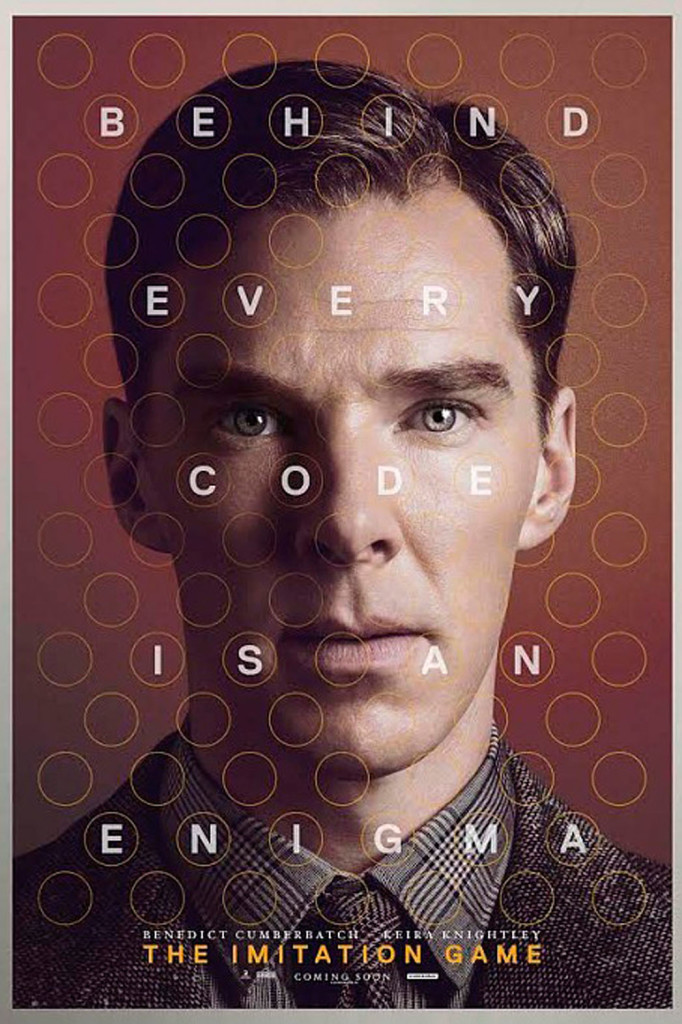 Is The Imitation Game a movie? The answer might surprise you.
Is The Imitation Game a movie? The answer might surprise you.
There I was, skimming through the comments last week, when I spotted one that caught my cornea. The comment was from a writer who had asked his director friend what he thought of the Black List. There were some good scripts on there, the director friend conceded, but not a lot of MOVIES.
Not a lot of “movies?” What was that supposed to mean? Aren’t all scripts written to be movies? What was this strange director friend of a friend of a commenter talking about?
What he was talking about is that not every good script makes a good movie. That’s because good movies aren’t only about stories. Movies are about imagery and ideas and action and adventure and sound. There was a time long ago when people went to the movies because they could take them places they’d never be able to visit otherwise.
It’s a lot easier to see the world these days with the internet and a thousand outbound flights to Europe every day. But the spirit of this statement is still true. A movie has to give people something they can’t have in real life, something outside of the norm.
Look at the Star Wars trailer, which, no, I have not watched 117 and a third times since Friday. Who gave you that information? There’s a sense of “action” in each of the shots presented. The characters need to get somewhere. We’re on other planets seeing things we’ve never seen before. We can’t get this kind of action or these kinds of worlds anywhere else but in the movie theater.
On the flip side, you have films like Garden State and The Skeleton Twins. These aren’t movies. They’re glorified 90 minute TV shows – talking heads going through issues. With the line between TV and film blurring more every day, it’s become even harder to justify these “movies.” They’re not giving us anything we can’t see on our television sets.
I’ll never forget what an agent told me when I first got here, which is that people are going to pay MILLIONS OF DOLLARS to produce your screenplay. So what are you going to show the world that’s worthy of those millions? If it’s just two people chatting about how life is difficult, your financers are going to wonder why you need 2 million bucks. Why not just shoot it on a Best Buy camera for nothing?
Let’s get more specific. What is it that makes a script a “movie script” and not simply a “good screenplay?” Here are seven things that will help you determine just that. Your script doesn’t have to hit all of these points. But it should hit most of them.
1) A large scope – Movies are supposed to feel larger than life. So the scope should feel bigger than normal.
2) The script falls within one of these movie-friendly genres: horror, sci-fi, action, adventure, thriller, period.
3) The script doesn’t fall within one of these non-movie-friendly genres: Straight drama, coming-of-age, political, romance (unless you’re Nicholas Sparks), and satire.
4) Your script is something we can’t get anywhere else but in the movies (dinosaur parks, for example).
5) Can you easily imagine the trailer?
6) Is the script something a director would be eager to direct? (I bet there wasn’t a line of directors out the door wanting to helm “Obvious Child.”)
7) There’s a lot more action (and by action I mean characters doing things, not just stunt action) than there is talking.
With this newfound knowledge, let’s look at five Black List loglines and determine if they’re “movie” ideas or just well-written screenplays. I want to make something clear. I am in no way passing judgment on the scripts themselves. In fact, I haven’t even read any of them. We’re just trying to determine the script’s viability as a movie.
Hot Summer Nights
Logline: A teenager’s life spirals out of control when he befriends the town’s rebel, falls in love, and gets entangled in selling drugs over one summer in Cape Cod.
It sounds like the main character is quite active in this, which is good. The drug trouble stuff implies some moving around (movement is good – it’s not called a “move” “ie” for nothing). But the scope here feels too small. I don’t see any directors getting excited over this. They made the similar “Toy’s House,” last year, a script that I liked. And the film was pretty good too. But nobody saw it because it was, you guessed it, not really a movie. If you turned this into a straight comedy, a la Superbad, that’s a different story. Mainstream comedies are always movies. But this doesn’t sound like that.
I’m Proud of You
Logline: A journalist looking for a story about television’s role in the Columbine tragedy interviews TV’s Mr Rogers and, as a friendship develops between the two, he finds himself confronting his own issues at home.
I mean put yourself in a director’s shoes. Is there anything at all in this logline that would make you want to direct this film? Any powerful imagery? Any action? Anything unique to do on the filmmaking end? My guess is no. This sounds like a very slow-moving sad character piece, which are anti-movies.
The Line
A corrupt border crossing agent must decide what is more important — saving his soul or inflating his bank account — when he discovers a young illegal boy who escaped a cartel hit on the border between the U.S. and Mexico.
I’m seeing the word “slow” in my head every time I read this logline. “Slow” and “movie” don’t go together. Movies must have a sense of urgency, of people needing to do things. Here, it sounds like a lot of sitting around, a lot of characters discussing their pasts, their feelings, their shitty situations. Since “slow” is usually synonymous with “boring,” this doesn’t feel like a movie to me.
Elsewhere
Logline: After his girlfriend dies in a car accident, a man finds his true soul mate, only to wake from a coma to learn his perfect life was just a dream — one he is determined to make real.
My first thoughts are that this isn’t a movie. Seems more like indie actor bait. With that said, the premise is cleverer than the others, and it leaves the viewer with a compelling question (Does he find his soul mate?) that may entice them to see the film. But getting people to the theater doesn’t necessarily mean you’ve created a movie. If the shots are still static. If the style is still basic. If there’s not a lot of movement or urgency, then fancy premise or not, you still don’t have a movie.
Diablo Run
Logline: While on a road trip to Mexico, two best friends are forced to enter a thousand-mile death race with no rules.
Boom! Finally, we have a movie! Look at the elements involved. A dangerous country. Good! “Forced.” That means characters must do things against their will (conflict!). “Race.” That means cars and lots of action. “Death.” That means the stakes will be high, with competitors wanting to kill one another. Go ahead, imagine the trailer. It’s way clearer than any of the above ideas, right? That’s a good sign that you’ve written a movie.
 The Force Awakens: Definitely a movie!
The Force Awakens: Definitely a movie!
Now this isn’t always a clear cut thing. Some scripts are stuck between these two extremes. We don’t know if they’re movies until we see them on the big screen. After the studios grab all the best material (the material that results in the best movies), this “unclear” material is out there for the pickins and second-tier producers have to gamble on each horse, hoping they’re a movie.
The Imitation Game script is a perfect example. It was about World War 2, but the majority of the scenes took place in small rooms with characters talking to each other (dreaded “talking heads”). Again, people talking in rooms is about as exciting as watching fish bake. Any schmoe can buy a camera and record people in rooms. There’s no action. There’s no vision. It’s static. Audiences don’t like to pay for these films because they don’t see anything movie-like about them.
Now I still haven’t seen The Imitation Game, but I’m guessing one of the first things they did when they rewrote it was to look for ways to make it more of a MOVIE. Can we show some of these WW2 ships attacking each other instead of hearing our characters talk about them? Can we put our characters ON these ships? Can we put them closer to the war so we can see more of the war? Can we put them in a bombed city? Can we add a scene where the bombing comes close and they must run for their lives? This is how you turn an “almost movie” script into a movie.
And look, I’m not saying that non-movie scripts can’t be good films. I loved The Skeleton Twins. I loved Philomena. I love Good Will Hunting. What I’m saying is that they’re infinitely tougher to sell because they’re not movies. They don’t have movie-like qualities. Take one of the greatest films ever – The Shawshank Redemption. That wasn’t a movie. It had some cinematic aspects to it. But it was guys talking in a prison. Now you might say, “Carson, now you’re just straight up trippin. Shawshank not a movie?? You’re off your rocker!” Okay, well then let me ask you this. Where were all of you when the movie came out? Cause you didn’t show up at the theater. The Shawshank Redemption bombed gloriously at the box office because people saw that trailer and went, “That’s not a movie. That’s a lot of sad people chatting in jail.”
The reality is, in this day and age, with TV getting bigger and theatrical releases favoring flashy more extravagant movies, there’s less and less room for these non-movie screenplays. So you have to think long and hard about what you want to spend the next six months on. You can write a “movie” and get a lot of interested parties when you’re finished. Or you can write a “script” and make things really hard on yourself.
If you think this advice is bullshit (I’m sure some of you do) and still prefer writing “scripts,” I’d strongly suggest making your script yourself. The one advantage with non-movie scripts is that they’re cheaper to shoot. It’s typically just a camera and actors. It’s actually a good thing no one will give you money because it’ll force you to go out and make it on your own. And who knows? If the characters are fascinating and the plotting’s great, it might end up being one of the few “non-movies” (i.e. American Beauty) that make some noise. But if I were you, I’d stick with movies. It’s so much easier to get your script noticed when you’ve written a movie. ☺
Genre: Sports Drama
Premise: A boxer’s life spirals out of control when his wife is killed, forcing him to team up with an alcoholic low-level trainer to make it back to the top.
About: “Southpaw” was written by Sons of Anarchy creator and all around badass, Kurt Sutter. Sutter got his break in Hollywood writing for the hit FX show, The Shield. What a lot of people don’t know is that Sutter is married to Peggy Bundy herself, Katey Sagal. Southpaw is Sutter’s first foray into features. This one’s got Jake Gyllenhall in the lead role, Rachel McAdams playing the wife, and Antoine Fuqua directing. Forest Whitaker will be playing the Oscar-friendly role of “Tick.” This is an older draft, written back in 2011. Believe it or not, the project has been around long enough where Eminem was once attached as the lead.
Writer: Kurt Sutter
Details: 122 pages – 3/9/11 Studio Draft 1 (keep in mind that a studio draft does not mean a first draft of the script itself, but rather the first draft the writer turned into the studio. A writer may have gone through many drafts of the script before turning it into the studio. Studio 1st Drafts are typically the drafts that most reflect the writer’s vision, as it’s before the writer gets studio notes).
Today’s script is like the anti-Brian Duffield. Kurt Sutter writes thick. Like the very first paragraph in Southpaw is nine lines. Duffield’s written entire first acts in nine lines. Now a lot of you point this out when you see it in scripts and say, “Carrssssonnn! How come THEY can write so much text and we have to keep everything to three lines or less??”
Basically, when you’re already in the industry and have fans of your writing, those people are going to read your scripts regardless of if they’re chunky or lean. But if you’re not yet in the industry, the reader will have less patience with you. They have what I call “bail mentality.” They’re ready to bail at any sign of difficulty. So you have to speed things along and get to the good stuff quicker in order to keep their attention.
33 year-old Billy “The Great” Hope is the best boxer in the world. He’s Mike Tyson in his prime. He’s got Lamborghinis, mansions, pools, he even has a beautiful wife (Maureen) and daughter (Leila). Hope seemingly has the world in his hands.
Then one day, Billy’s posse runs into the posse of Miguel “Magic” Canto, the younger quicker version of himself. Trash talk turns into threats and, in an instant, guns come out on both sides. (SPOILER) Shots are fired, and when everyone does a body check, it turns out Billy’s wife loses. She dies right there in his arms.
Billy spirals into depression, ignoring bills and contracts, even spacing out in the middle of fights. Over the course of half a year, he loses everything, even his daughter, after the local child services deem Billy unstable.
Billy can handle not having money. But he can’t handle life without his daughter. So he hires a low-rent one-eyed trainer named Titus “Tick” Wills to get him to a point where he’s making money again.
Tick tells Billy if he’s going to train him, he has to play by his rules. And that means dropping this bulldozer mentality he takes into the ring and learning how to actually BOX.
To improve Billy’s speed, Tick puts Billy in the ring with 15 year olds who are twice as fast as him, like little mosquitos. Then he teaches Billy how to break down his opponent with his mind. Learn their weaknesses so he can exploit them.
Resistant at first, Billy soon becomes a Tick disciple, and gets a bout with the man who’s responsible for his wife’s death. Will he win? Will he get his daughter back? Check out Southpaw to find out.
Because of Rocky, you can’t set up the ideal character scenario for a boxing movie anymore. Which is the down-on-his-luck underdog. No matter how you spin it, if you start your boxing movie that way, people are going to say you’re copying Rocky.
So you have to find fresh takes for your boxing hero. Sutter does this by introducing us to Billy at the top. An interesting choice, because that means he’s the opposite of an underdog. He’s a champion. And as I’ve stated here before, it’s damn hard to make the non-underdog sports story work.
But eventually, Billy hits rock bottom and BECOMES the underdog. Or does he? This was my only big issue with Southpaw. It wants to paint Billy as having no chance against Miguel “Magic” Canto. But we’ve already seen Billy pummel people into ground beef. So it’s a hard sell. And it’s not like Billy had an injury, something that made him slower. He’s the exact same guy.
Luckily, that’s not a deal breaker in these movies. With any fighting movie, it’s more about what happens OFF the mat than ON it. And we have three key relationships doing the work off the mat. We have Billy and his relationship with his daughter. Billy and his relationship with Tick. And Billy and his relationship with Angela, Billy’s daughter’s childcare worker.
I’ve said this before. Having three key relationships to explore in a script is an ideal number. If you go for more than that, you might not have enough time to properly explore each of those relationships (though it’s possible if your plot isn’t too heavy).
Southpaw’s success was always going to hinge on the relationship between Billy and Tick. And it’s pretty good. It’s not Rocky and Mick good, but there’s always an undercurrent of tension between them that keeps their interactions interesting. Plus Tick is a mysterious guy who we want to know more about (make characters mystery boxes, folks!). His backstory for how he ended up this way is one of the better backstories I’ve read in a sports movie. (good mystery payoffs earn you double points, folks!)
As for the daughter relationship, it was pretty good as well. The two didn’t have any issue to deal with. But remember, you don’t always need an issue. As long as there’s conflict SURROUNDING THE RELATIONSHIP in SOME CAPACITY, the relationship between two characters can be great. In this case, the conflict is the court – which is keeping Billy and his daughter apart.
Billy and Angela (the childcare worker) was the final relationship. And I could tell it was a tough one for Sutter. You can’t turn Angela into a romantic interest on the heels of his wife’s death. So that puts you in a spot that Hollywood movies are never comfortable with – putting an attractive male and female in a bunch of scenes together, and not exploring any romance.
But here’s how I would’ve dealt with it. And I’m far from a Sutter-caliber writer so you’re welcome to laugh me off. It wouldn’t be the first time. But it’s important to remember that every key character in your story should have a dilemma. Characters should never exist solely to serve the main character’s plight, but rather their own plight.
Angela is introduced as a stickler for the rules. She has to chaperone all visits between Billy and his daughter, and she does that. But this flaw of hers (her need to follow the rules) never comes to bear. What I would’ve liked to see is for the court to play dirty. They go back on their word and keep Leila away from Billy after he’s done everything he was asked to.
By doing this, you set up an interesting dilemma with Angela, the rule-follower. She’s now presented with a choice. Break the rules so Billy can rightfully be with his daughter or continue to enforce an unfair ruling she morally disagrees with.
That’s not what happens though. Angela is more of a constant force. And constant forces aren’t evolving forces. In my opinion, a character’s status quo should be constantly challenged. The more their morals and beliefs are challenged, the more compelling they get.
Think about that for a second. When are we most pulled in by a character? It’s usually when the core of their being is being challenged.
I actually saw this exact scenario while reading a script a few weeks ago. The entire script was bad. Just really really bad. But there was this one scene – ONE SCENE – and I could only surmise that the writer wrote the thing by accident because it was so unlike anything else in the story. In the scene, a cowardly character who always avoided conflict was walking into a store with his girlfriend and these punks started saying terrible things to her. It was the only time I was drawn in because the scenario cut to the heart of this character’s flaw. Was this guy SUCH a coward that he would allow these bullies to harass his girlfriend? That’s good character exploration there.
Too many writers think these choices should only be explored through their main characters. That’s a mistake. You want to be exploring them through your main three or four characters. Otherwise, those characters are just serving the needs of your hero. They’re not their own people.
Southpaw is a good script. You can tell Sutter’s blood and sweat is in this one and so, even when I didn’t personally agree with something, his passion for the story carried me through. Here’s to hoping the movie is awesome.
[ ] what the hell did I just read?
[ ] wasn’t for me
[x] worth the read
[ ] impressive
[ ] genius
What I learned: With any sports movie, it’s what happens OFF the field that matters most to the audience, not what happens on it. And what happens off the field can basically be measured by the quality of the three main relationships your hero’s involved in. Make those three relationships compelling and you’re going to have yourself a good script.
Genre: Indie/Action?
Premise: A psychologically damaged slacker living in a small town with his girlfriend, soon finds that the CIA is trying to kill him for reasons unknown.
About: American Ultra was written by Max Landis, the writing machine who writes like five scripts a year. The Chronicle writer got Jesse Eisenberg and Kristin Stewart attached to this script, and Project X director Nima Nourizadeh to direct. The prolific scribe is set to direct his first feature soon with “Me Him Her,” – which is being described as “Reality Bites on acid.” If that sounds scary, Landis told Variety of the script, “It’s totally insane! The devil is in it,” which seems to be a theme in a lot of his writing. American Ultra was shot earlier this year and comes out in 2015.
Writer: Max Landis
Details: 109 pages – 3/13/2013 draft
Garden State meets… The Bourne Identity?
Bet you haven’t seen that pitch before.
Can something like this actually work?
That’s a good question, and one I’m not sure we’ll be able to answer by the end of this review. And that’s because I heard Max Landis doesn’t write more than one draft. Ever. Like he finishes his first draft and says take it or leave it.
Whether this rumor is true or not, I don’t know, but it’s surely going to affect how our stoner version of Bourne Identity turns out. And if we don’t know what the best version of American Ultra can be, then how can we determine if a mash up of these genres works?
I do think the “never writes second drafts” thing is kind of cool though. Or at least a cool thing to talk about. I mean, how much does a rewrite REALLY mean to a script? And could there be a scenario where writing more than one draft actually hurts a script? Let’s find out.
29 year-old Mike Howell is similar to the small town he lives in: Liman, Oregon. He’s kind of in the middle of nowhere with his life. He doesn’t have a whole lot of motivation. He doesn’t ever leave town. And that makes it hard to understand why his beautiful hippy girlfriend, 28 year old pot-hot Phoebe Larson, is with him. Because Phoebe seems to be everything Mike isn’t, strong, motivated, focused.
Anyway, at the end of a hard day – actually, that’s not true. Mike works at a grocery store – I’ll rephrase. At the end of a medium day, Mike notices two dudes putting something under his car. He asks them what they think they’re doing, and the guys pull guns out and prepare to KILL MIKE.
So Mike takes the spoon from the ice cream he’s eating and KILLS TWO MEN WITH A SPOON (yes, a SPOON!). He looks at himself afterwards. How the hell did he do that? He races back to Phoebe to tell her what happened, only for more evil crazy guys to come after him and try to kill him.
What we eventually learn is that Mike is part of some abandoned mind-altering CIA experiment program that’s being phased out, and Mike has to be eliminated by the government so their tracks are covered. Except Mike doesn’t want to be eliminated. Mike wants to know how he can kill people with spoons!
Pretty soon, an entire section of the CIA descends upon Liman to get rid of Mike, but Mike’s not going down easy, especially because with each person he kills, he gets access to better and better weapons. I mean, if you can kill a man with a utensil, imagine what you can do with a gun.
(spoiler) But Mike is devastated to learn that his girlfriend has actually worked for the CIA these past five years and is his girlfriend solely to keep an eye on him for the government. Normally, when you find out your girlfriend’s been deceiving you for five years and that more than 30 people want to kill you, you’d go into a state of depression and end it all. But Mike decides to use his hibernated skills to teach the CIA a fucking lesson. That no one messes with Mike from Liman, Oregon. Bitch!
They call this kind of script a “tweener.” It’s in be-TWEEN two genres. Tweeners are these anomalies that scare the hell out of producers. On the one hand, a tweener is almost always original. Since it doesn’t fall into a clear genre, it feels like something we’ve never seen before. That’s good!
But that also works against the script, as no one knows how to market tweeners. Audiences (and that includes you, bucko) like to know what they’re going to see. When you’re in the mood for a thriller, you don’t look for a kind-of thriller kind-of indie romance. You look for a thriller. I mean would you see The Skeleton Twins if Kristin Wiig was also an assassin? Probably not.
With that said, the hope with a tweener is that the originality of the idea is strong enough to outweigh the murkiness of the genre. This is exactly what we were dealing with yesterday actually. The Babadook is kind of a horror film but also a drama. Yet it was unique enough that its tweener-ness helped it stand out from the competition.
Does the same thing happen for American Ultra? Well, here’s why that’s hard to answer. This is clearly a first draft. And if that’s because Landis only writes first drafts, then I guess it is what it is. I’m just trying to figure out if the first-draft-ness here works FOR the script or AGAINST it.
The thing that a first draft gives you that no other draft gives you is UNTAMED ENERGY. Your first draft is always raw. And while you may not have the structure or the characters worked out in the story, the script is alive in a way it can’t be after you’ve diddled with it for 20 drafts.
American Mayhem takes off about 15 pages in (when Mike kills the CIA agents) and then never lets up. And Landis’s writing style, which is very confident and excitable, works well with this uncapped energy. You’re not sure where he’s going, but the writing is so damn fun that you go with it.
I mean how else do you explain coming up with dialogue like: “You’ll be detained and tortured to reveal your source, indicted as a traitor and locked away forever, even if you found out I didn’t have proper sanction or protocol you’d still be in a bureaucratic catch-22 where you’re the bad guy. You’re my fucking dog here, I could walk you, behave.”
The thing is, whenever you’re putting the onus on a first draft to carry the story, you’re walking the line between RAW and MESSY. Raw is good. Messy isn’t. And while good writers can keep a script feeling raw for 30, 40, even 50 pages, nobody I know can keep an entire script in their head, perfectly structured, for 110 pages.
Just simple things like setups and payoffs require lots of rewriting. How many times have you come up with a cool idea, like Doc using a bullet proof vest so that the Libyans can’t kill him (Back to the Future) knowing that the only way it can work is if you set it up earlier? That’s where subsequent drafts really help. Is going back and prepping those late-script ideas.
But a bigger problem with writing only one (or even two or three drafts), is that the characters always seem murky. I’ve found that you need to write a lot of drafts and see your characters through a lot of situations before you get a sense of them, a sense that you can then go back and make clear for the reader.
While American Mayhem sets Mike and Phoebe up well (Mike is an unmotivated loser – Phoebe is the good girlfriend who’s trying to help him see his potential), once the shit hits the fan, all that character development goes out the window. It’s just the two running around trying to stay alive.
Now obviously, once you’re fighting for your life, your future career choices don’t seem that important. But that’s the challenge of a screenwriter. Is you have to figure out a way to still focus the story on the characters, the characters overcoming their flaws, and the characters overcoming their relationship issues. That’s what a screenplay is supposed to be about, is your characters transforming. And since good character transformations are some of the trickiest threads to pull off, they typically take a lot of rewriting.
Personally, from what I’ve seen from Landis, I think he’s a good writer. His voice is chaos mixed with childlike fun. He’s like Brian Duffield in that way, just a little more reckless. That gives his scripts an electricity that’s very hard to match. I just wish I saw a little more focus in his stories. They’re fun, and yet they kind of feel like the passionate guy at the party telling you about how he stole the pizza guy’s delivery car last weekend. It’s entertaining for awhile, but once you realize he’s wasted, you kind of wanna go somewhere else.
[ ] what the hell did I just read?
[x] wasn’t for me
[ ] worth the read
[ ] impressive
[ ] genius
What I learned: This isn’t so much a tip as it is a warning that you can’t fool a reader. I can always tell an early draft when I see a lot of monologues in it. This is especially true when I see the monologues increase in frequency and length the further into the script we go. That’s because in early drafts, we don’t quite know our characters or our story yet. So we have our characters talk a lot as a way to figure things out. Over the course of rewriting, we move a lot of that “telling” dialogue into “showing” action and we focus what our characters are saying into smaller more concise snippets. In American Ultra, there were a TON of monologues, and they got bigger and more frequent as the story went on, contributing to its messy feel. Landis is a good enough writer that it didn’t become too much of a problem (his monologues were usually quite funny), but usually this is a death knell for screenplays, and proof positive to the reader that you didn’t put enough work into your script.
The Scriptshadow Newsletter, featuring a review of one of the latest spec sales AND news about The Scriptshadow 250, has been SENT. If you did not receive the newsletter, check your SPAM and your PROMOTIONS folders to make sure it isn’t there.
Genre: Horror
Premise: A single mother starts to turn against her developmentally challenged young son when he insists that he’s being visited by a mythical fairy tale creature named “The Babadook.”
About: The Babadook first took the movie-going world by storm during a midnight screening at Sundance, where it instantly broke through and became a buzz-worthy hit. Originally released in Australia, it’s just now coming to the U.S., where it’s in limited release and available on Itunes. Inspired by filmmakers such as David Lynch and Lars Von Trier (whom she worked for once), writer-director Jennifer Kent went into her first directing experience terrified but confident. She felt that if the offbeat and unorthodox Von Trier could direct a film, that she could probably pull one off herself. Of course, she had to make SOME concessions. She originally wanted to shoot the movie in black and white, but was talked out of it by her understandably wary producer.
Writer: Jennifer Kent
Details: 93 minutes
One thing becomes clear as you start watching The Babadook: It’s different. There’s a subdued understated quality to the filmmaking that’s mildly off-putting. I don’t know how to describe it other than to say it’s “lonely.”
Sometimes that works for the movie and sometimes it doesn’t. Because The Babadook really is its own thing. A contained thriller almost, it locks you into this house with a mother and son and keeps you there against your will. For that reason, the film always feels a little claustrophobic. Normally that would be a good thing for a horror film. But is this a horror film?
Some could argue that The Babadook is more of a drama than anything. And Kent seems to support this take when she says she never overtly tried to create a scare in the movie (although I might argue that point with the terrifying Amelia-hiding-under-the-covers “Baaaaa-baaaaaa-doooooook” moment).
But while the movie struck a chord in me in a way that the “Ouijas” of the world could never accomplish, I’m still not sure how I feel about Baba. Maybe expectations have crippled my ability to see the film objectively. I wanted to be scared but instead I was kind of tricked into watching a troubled mother-son story. But isn’t that what all good movies do? Lure you in with the hook then keep you there with the characters? Uggghhhh, my mind says yes but my horror-loving heart says that wasn’t enough!
The Babadook is a simple story. Amelia is a single mother trying her hardest to raise her 6 year old son, Samuel. Samuel’s kind of a troubled kid. He’s prone to bouts of screaming and delusions, making the already difficult task of raising a child THAT much more difficult.
Well, it’s about to get even more difficult. Amelia starts catching Samuel in his room talking to someone, except there’s no one there. When she asks him about it, Samuel says he’s talking to the “Babadook,” the spooky imaginary character from one of his children’s pop-up books.
We eventually learn that the reason there’s no father in this picture is because he died when their car crashed while racing to the hospital during Amelia’s labor. Samuel’s birth literally killed his father, and there’s some deep buried resentment from Amelia because of it.
As Samuel becomes more and more insistent that Mr. Babadook is real, Amelia finally starts to crack, and all those extra hours taking care of her troubled child turn her into a monster hell-bent on killing her son. Thus the question arises. Who’s the real Babadook? The man in the book or Amelia herself?
What’s that old saying? “Be careful what you wish for?” Not long ago after watching Doll Shit – I mean, Annabelle – I complained that horror movies were getting too light. Writers weren’t delving into their characters and those characters’ psyches and finding those evil nooks and crannies that bring true horror to life.
Well, that’s exactly what The Babadook is. It’s a heart-wrenching EXTREMELY intense look at a fractured and complicated mother-son relationship, one where the mother starts to lose it, and becomes convinced that her child must pay the ultimate price. But if this is what I wanted, why don’t I feel satisfied?
I mean this IS what memorable horror movies do. They’re so realistic that you’re afraid they could actually happen. Look at The Exorcist and how realistically that whole situation was portrayed. You didn’t get characters opening bathroom mirrors to look for toothpaste, then closing them, only to see a skeleton face behind them in the reflection. You got those terrifying trips to the hospital with shock therapy, where a mother watched helplessly from outside the room as her daughter was tortured.
That’s the same way The Babadook approached its horror.
And yet… and yet… it felt TOO raw. TOO intense. There’s a scene late in the movie where the mom is so hell-bent on killing her kid that I thought to myself, “This isn’t a horror movie any more. This is just a fucked up mom who wants to kill her child.” It was… disturbing.
With that said, The Babadook is still a film worth seeing because it does something so few horror movies actually do. It dares to be different. As Kent says in one of her interviews, she had no interest in creating any jump scares. This is a movie where the horror gets under your skin and lives inside of you. Maybe that’s why it’s troubling me so much.
But yeah, I mean, look at the way Kent dealt with the story’s monster, which I thought was really clever. We never get a completely clear look at the Babadook, but from what we do see, it’s got this paper-mache design to it, as if it’s being plucked right out of the pop-up Mister Babadook book. How often do we get a unique monster in a horror script? Not often.
Another thing I noticed here was that this was a female writer. You could really tell that. And I don’t say that in a good way or a bad way, but a way in which you could tell this was a different point of view from what we’re used to seeing in horror, where the scares are less foreplay and more “straight to the deed.”
Kent inhabited her lead female character in ways I just don’t see men do. I mean, I see good male writers inhabiting their male characters. But The Babadook was a great reminder that the female characters need just as much of your infatuation as the male ones. You can never BE female if you’re a male. But you can do your best to ask yourself, “What would a woman do in this situation?” “What would a woman think in this situation?” You need this approach if you’re going to add even a fraction of authenticity to your female characters.
Lastly, I just wanted to say that it’s okay to include things in your horror script that people have seen before. For example, The Babadook is built on the age-old conceit of the child who talks to an invisible person. How many times have we seen that before? But it’s okay as long as you’re making a concerted effort to actively avoid cliché in as many other of your choices as possible. The core of this story is an intense honest unique relationship between mother and son that we haven’t seen before in a horror film. And since that’s such a dominant part of the script, we don’t see the “kid sees invisible people” moment as cliché. We only see that sort of thing as cliché when all the rest of your choices are cliche.
[ ] what the hell did I just watch?
[ ] wasn’t for me
[x] worth the price of admission
[ ] impressive
[ ] genius
What I learned: One of the ways to make your script stand out – and horror is a great place to do this – is to tackle taboo or dangerous subject matter. A big reason The Babadook has risen above all these other lame wanna-be-horror movies, is that it presents a truly terrifying situation – a mother who wants to hurt her child. That’s not a comfortable or safe situation to document in a story. Which is why this movie hits the viewer so hard.
What I learned 2: Make sure the creature in your horror film is born out organically from the story. This will ensure that you create something unique. Too many writers only care about creating a cool scary-looking monster. Instead, figure out where your creature is from, and build the monster from there. So if it’s from underground, it might be draped in weeds. If it’s from a giant farm, it might have an Scarecrow-like appearance. In this case, the monster came from a pop-up book, so it had a pop-up paper mache look to it.
To learn more, sign up for the newsletter here, which will be out this Saturday!


